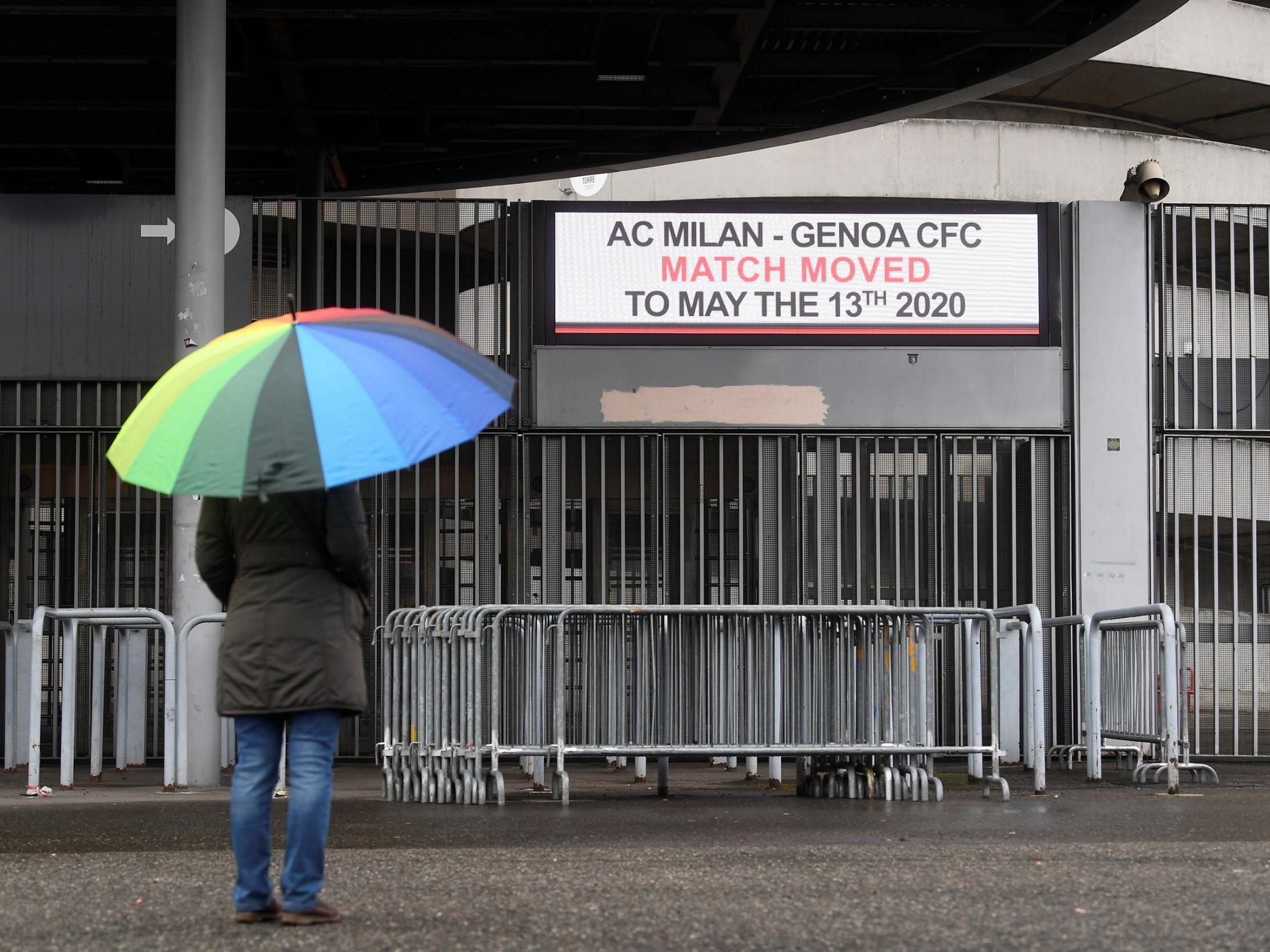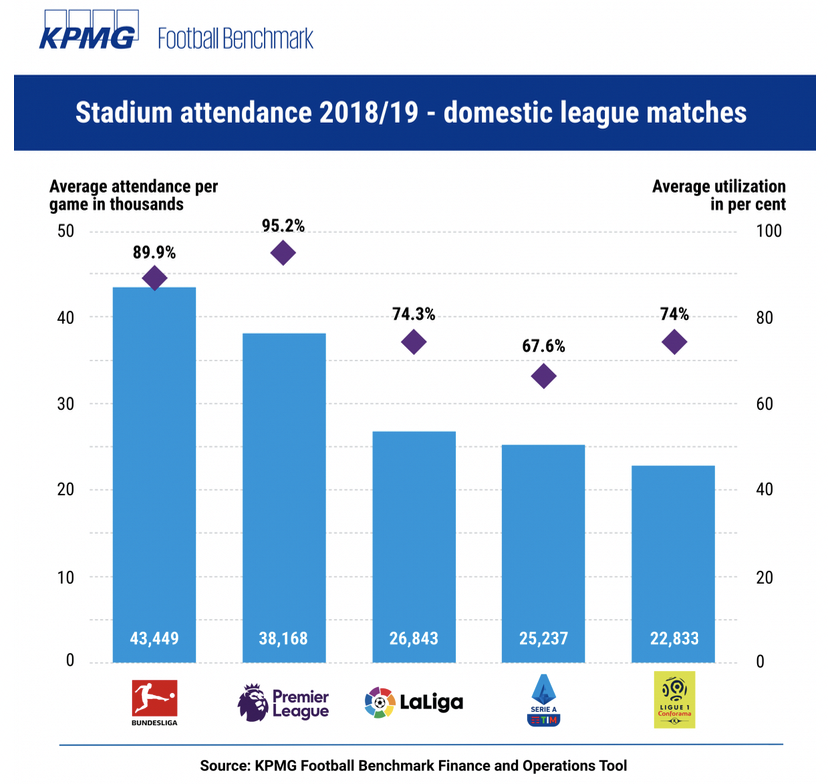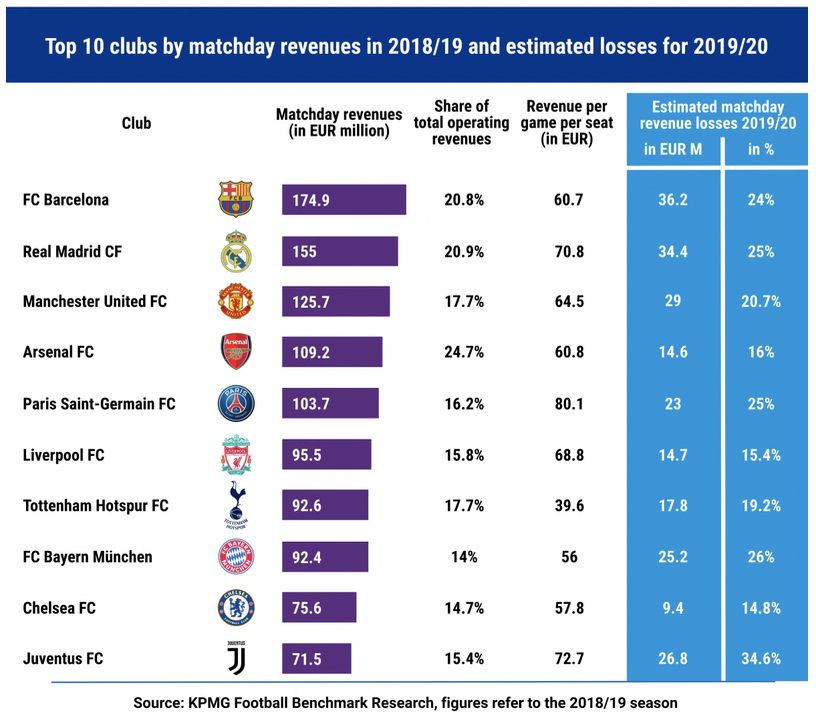By Paul Nicholson
July 10 – The coronavirus pandemic looks likely to bring some fundamental long term changes to how fans watch live football and the confidence they have to return to stadia. Those changes will impact on stadium operations but also on what the live experience delivers beyond the game on the pitch.
Andrea Sartori, KPMG’s Global Head of Sports, believes that: “In the future, attracting the younger generations to live games might be more challenging if stadia won’t be able to provide a high-tech tribal experience that is attractive to the tech-savvy younger generations and ensure a sustainable environment that complies with stricter health requirements.”
KPMG’s Football Benchmark team have looked at the importance of match day revenue to Europe’s biggest clubs as an income stream, and the challenges stadia have to face in delivering revenue generating, fan attractive facilities post-Covid.
The data shows that on average match day revenues make up about 20% of big club revenues (they obviously make up a lot more of lower league club revenues). That revenue will be impacted by as much at 35% for Juventus for the 2019/20 season and as little as 15% for Liverpool, estimates KPMG.
The obvious first issue for clubs preparing for any return of fans is allowing for social distancing and managing the spread through the touch of common surfaces/objects. KPMG says that: “Technology will play a major role, and it is already available in the form of, for example, automatic doors or no doors at all, sensors and infrared detection systems to activate lights or other functions, and, especially in toilet areas, using self-flushing toilets and automatic soap dispensers. The use of hygienic materials and surfaces that are easily cleaned and disinfected will be also paramount.
“Moreover, mobile technologies can provide practically a full non-touch scenario for individuals in a stadium and its precincts: access and tickets can be handled online, people can receive food and drink at their seats at half time by arranging both request and payment for F&B online, thus avoiding movement and further contact with others.”
The KPMG authors quote Mark Fenwick, who leads Fenwick Iribarren Architects, who estimates that a 10-15% reduction in capacity will be generally implemented to ensure a reasonable level of comfort and health security. He also believes that future stadium developments will mandate a reduction of these facilities’ overall capacity, but that in terms of stadium profitability “it is a sustainable and saleable challenge.”
KPMG reference a ‘UEFA Guide to Quality Stadiums’ (published in 2011, co-authored by Fenwick), that sets out the requirements for stadium design and construction. Its first recommendation is that “Stadium design should focus on the need to create people-friendly structures which provide maximum levels of comfort and safety.”
Looking to that future Sartori believes that demographic trends and the changing consumption preferences of younger generations, will pose the biggest planning questions for deciding on stadium capacity for future developments.
Read the full KPMG report here.
Contact the writer of this story at moc.l1751526809labto1751526809ofdlr1751526809owedi1751526809sni@n1751526809osloh1751526809cin.l1751526809uap1751526809



